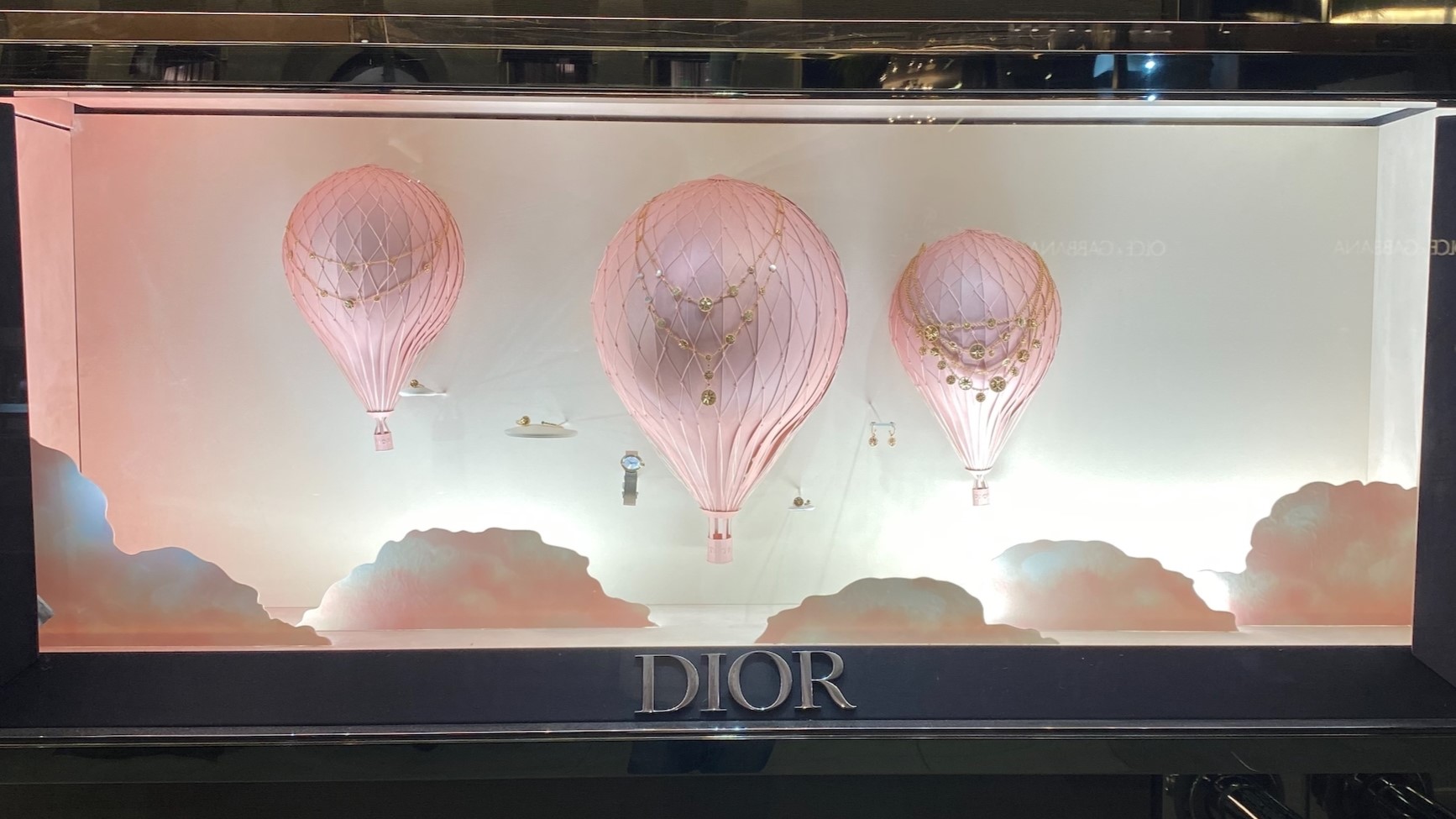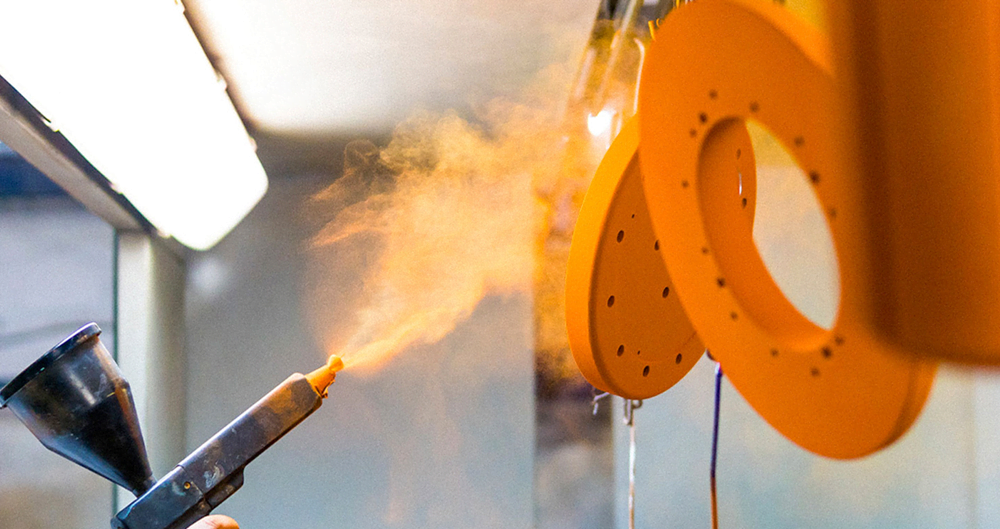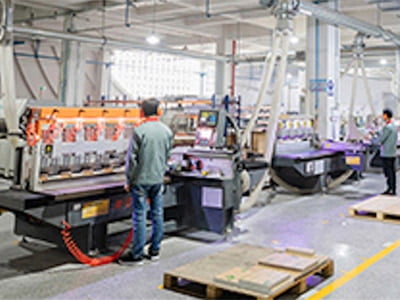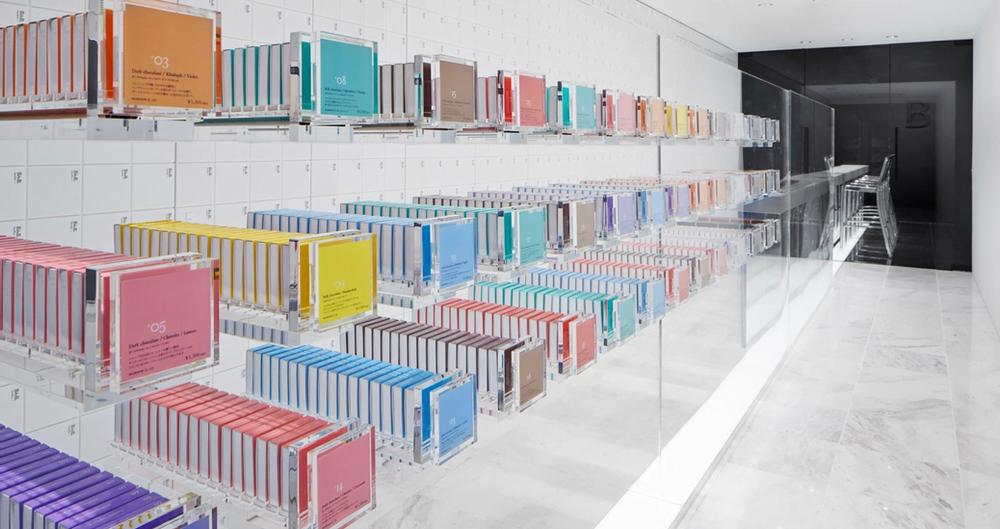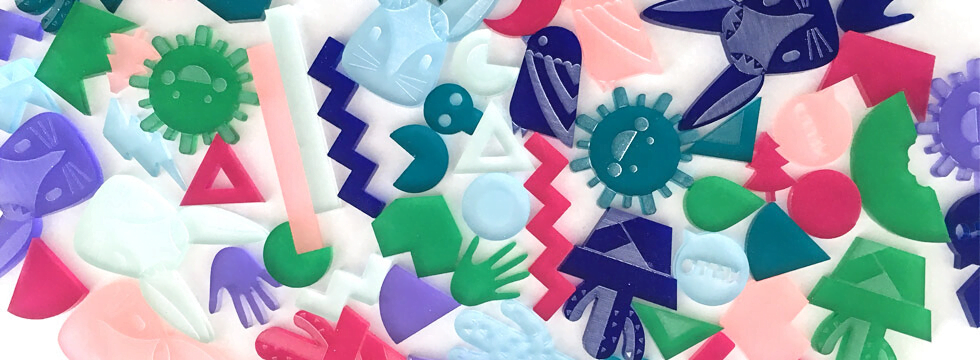Comparing Resin and Fiberglass for Sculptural Displays in High-End Retail Environments
Table of Contents
By Yan Luo | Samtop Display
Choosing between resin vs fiberglass sculptural displays is critical for high‑end retail: resin excels at intricate, polished details, while fiberglass wins on scale and durability. Resin works for small-to-medium indoor sculptures, and fiberglass excels in outdoor, high-traffic, long-term displays.

At Samtop, we help brands navigate the decision between resin and fiberglass to create premium, sculptural retail displays that align with brand aesthetics and durability requirements.
🌍 What is Resin?
Resin is a synthetic material that hardens when mixed with a hardener or catalyst. It is particularly known for its ability to capture fine details and achieve a high-gloss, polished finish, making it ideal for high-end sculptural displays.
Key Advantages of Resin:
- High Detail Retention: Resin is perfect for creating displays with intricate designs, fine textures, and detailed engravings.
- Smooth, Polished Finish: Resin displays often have a glossy, mirror-like finish that makes them shiny and visually striking.
- Customization: Resin can be molded into complex forms, allowing designers to create highly customized sculptures with unique features.
For brands comparing resin vs fiberglass sculptural displays, resin leads when fine branding details and mirror‑gloss finishes are the priority.
🧪 What is Fiberglass?
Fiberglass is a composite material made of glass fibers embedded in a resin matrix. It is known for its lightweight, durable nature, and is used for creating large, robust displays that need to withstand heavy handling and environmental conditions.
Key Advantages of Fiberglass:
- Strength and Durability: Fiberglass is extremely strong and can withstand heavy impacts and frequent handling. It is ideal for large-scale sculptures that need to be durable over time.
- Weather Resistance: Fiberglass is resistant to UV rays, moisture, and temperature fluctuations, making it perfect for both indoor and outdoor displays.
- Lightweight for Large Pieces: Despite its durability, fiberglass is lightweight for its strength, making it easier to transport and install for large installations.
In resin vs fiberglass sculptural displays, fiberglass is preferred for large pieces that face frequent handling, weather and heavy foot traffic.
📝 Comparing Resin and Fiberglass for Sculptural Retail Displays
| Factor | Resin | Fiberglass |
|---|---|---|
| Visual Appeal and Texture | High-gloss, polished finish with fine detail. | Rougher texture, matte or industrial finish. |
| Durability and Impact Resistance | Fragile, prone to cracks and scratches. | Strong, impact-resistant, withstands heavy use. |
| Cost | More affordable, ideal for small-scale displays. | Higher cost, but better for large, long-lasting installations. |
| Environmental Resistance | UV and moisture prone, needs protective coating. | Excellent resistance to weather, UV, and moisture. |
| Transport and Assembly | Easier to transport, suitable for smaller sculptures. | Can be bulkier, but easier for large pieces with reinforcement. |
1. Visual Appeal and Texture
Resin:
Resin is ideal for high-end sculptural displays that require intricate details and polished, smooth surfaces. Resin can be molded into very detailed forms and can be painted or dyed in a variety of colors. It is best for creating artistic sculptures that showcase fine details.
- Best for: Detailed logos, figurines, miniature sculptures, and intricate designs.
Fiberglass:
While fiberglass can be molded into detailed shapes, it tends to have a rougher texture compared to resin. Fiberglass is ideal for larger sculptures where strength and durability are prioritized. It offers a more matte or textured finish, which can be used to create an industrial look or organic feel.
- Best for: Large-scale sculptures, outdoor installations, or pieces that need to withstand heavy traffic.
Tip:
Resin is better for highly polished, intricate designs, while fiberglass is perfect for larger, more durable sculptures.
2. Durability and Impact Resistance
Resin:
While resin is durable, it can be more fragile than fiberglass. Resin displays are more likely to crack, chip, or scratch if exposed to heavy impact or rough handling. This makes it ideal for static displays or artistic sculptures that won’t be frequently moved.
- Best for: Indoor displays or temporary installations where displays won’t experience heavy impact or handling.
Fiberglass:
Fiberglass is incredibly strong and impact-resistant, making it an excellent choice for sculptures that will be frequently moved, installed, or exposed to outdoor conditions. It also resists scratches and dents, which helps maintain its premium appearance over time.
- Best for: Large-scale outdoor sculptures or displays in high-traffic environments.
Tip:
For frequently moved or high-traffic displays, fiberglass is the ideal material due to its strength and resilience.
3. Cost Considerations
Resin:
Resin sculptures are typically more affordable compared to fiberglass, especially when producing smaller or intricate displays. The cost of molding and materials is generally lower for resin, making it a great option for brands looking to create detailed displays at a more budget-friendly price.
- Best for: Small to medium sculptures or limited-run pieces.
Fiberglass:
Fiberglass tends to be more expensive than resin due to the manufacturing process and material costs. However, because fiberglass offers long-term durability and weather resistance, it can be a more cost-effective solution for large-scale installations or displays that require frequent transportation.
- Best for: Large installations that need to withstand extensive wear and outdoor conditions.
Tip:
Resin is the more cost-effective choice for small, intricate sculptures, while fiberglass provides greater durability and longevity for larger displays.
4. Assembly and Transport
Resin:
Resin is generally lighter than fiberglass, making it easier to transport and install. However, resin pieces, particularly those with intricate details, may require more careful handling to prevent damage during transport. Resin is ideal for custom sculptures that will remain stationary once installed.
- Best for: Displays that need to be set up quickly and relatively static pieces.
Fiberglass:
Fiberglass is stronger and can support larger structures with heavy-duty needs. However, fiberglass is often bulkier and may require more rigorous transport and handling procedures. Its lightweight strength makes it a good option for large sculptures that need to be easily moved around for temporary installations.
- Best for: Large-scale, transportable sculptures or outdoor installations.
Tip:
Resin is easier to transport and install for small-scale sculptures, while fiberglass is ideal for larger, long-term installations.
The most practical way to evaluate resin vs fiberglass sculptural displays is to map visual goals, durability needs and environment side by side.
Best Uses for Resin and Fiberglass Sculptural Displays
Resin:
- Small-Scale Sculptures: Perfect for luxury product displays, interactive props, and detailed figurines that need high precision.
- Intricate Custom Pieces: Ideal for custom logos, artistic pieces, and displays with fine details.
Fiberglass:
- Large Sculptures: Best for creating large-scale and weather-resistant sculptures for both indoor and outdoor installations.
- Durable Installations: Perfect for displays that need to withstand heavy handling, transportation, or high-traffic environments.
💬 FAQ
Q: Is resin durable enough for outdoor sculptures?
✅ While resin can be used outdoors, it may be more prone to UV degradation and cracking. For outdoor sculptures, fiberglass offers better resilience to the elements.
Q: Can fiberglass be used for small, detailed sculptures?
✅ Fiberglass can be used for smaller pieces, but it tends to be less precise and may not capture fine details as well as resin. It is better suited for larger, more durable sculptures.
Q: How do I protect resin sculptures from damage?
✅ To ensure resin sculptures maintain their appearance, seal them with a protective coating to guard against scratches, UV damage, and moisture exposure.
✅ Conclusion: Resin vs. Fiberglass for Sculptural Retail Displays
✔️ Resin is ideal for detailed, custom sculptures that require intricate designs and smooth, high-gloss finishes. It is best for small to medium sculptures and pieces that do not require heavy handling.
✔️ Fiberglass is perfect for large-scale, durable sculptures that need to withstand frequent transport, weather exposure, and heavy foot traffic.
✔️ Consider your budget, design complexity, and durability needs when choosing between resin and fiberglass for your next sculptural display.
At Samtop, we help brands create stunning, durable retail displays using both resin and fiberglass, ensuring the perfect material for your unique design vision. Retail Design Institute
📩 Need Help with Custom Sculptural Retail Displays?
At Samtop, we:
- Provide custom resin and fiberglass solutions for sculptural retail displays
- Offer design flexibility for both intricate details and large-scale installations
- Ensure high-quality craftsmanship and on-time delivery for your retail campaigns
📧 Email: [email protected]
🌍 Website: www.samtop.com
